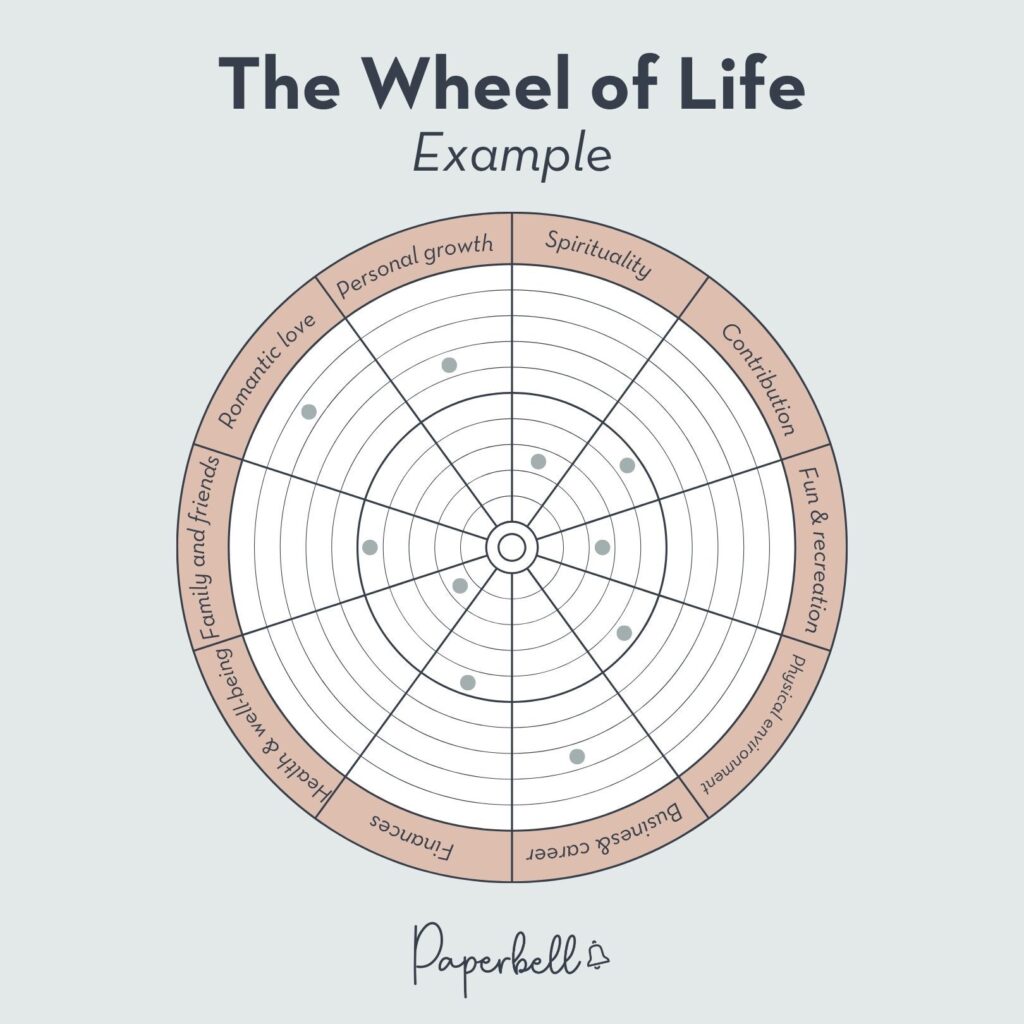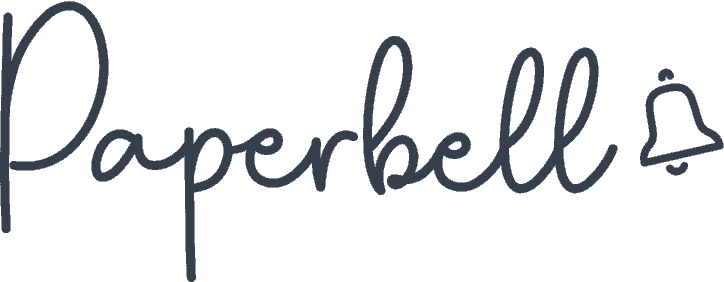The Wheel of Life is one of the most commonly used coaching assessments. It’s a simple yet powerful tool to map out how satisfied your client feels with different areas of their life and, as a result, help them reach a greater balance.
Although this life exercise is easily adaptable, it’s best to keep a few guidelines in mind when coaching clients with it. Let’s explore how you can use a Wheel of Life template in action.
What Is the Wheel of Life Framework?
The Wheel of Life is a popular framework primarily used in life coaching. It’s a versatile tool to assess the client’s satisfaction level in various categories of their life and set personal growth goals to improve it.
The life wheel assessment is especially powerful for self-reflection because it visually represents the various dimensions of one’s life. It helps your client see where they put their energy and attention, what gives them the most fulfillment, and what aspects of their life are neglected.
It typically consists of eight to ten segments, most commonly:
- Personal growth
- Romantic love
- Family and friends
- Health and well-being
- Finances
- Business and career
- Physical environment
- Fun and recreation
- Contribution
- Spirituality
Everyone has different priorities; one may focus on their family, while others find fulfillment in creative pursuits or traveling. Our lives also dynamically change over time: What matters to us in our 20s isn’t necessarily what we want to focus on in our 50s.
The point isn’t to score ten out of ten in all life categories; that’s virtually impossible. Instead, it’s to recognize what is or isn’t working in each, set self-improvement goals more consciously, and, as a result, live a more balanced life.
How Do You Make a Life Wheel?
Since it’s a visual assessment, it’s best to use a blank wheel with each client on a paper or tablet and draw their evaluations on it.
If you’ve done some digging, you might have noticed that different Wheel of Life templates on the internet have different categories. This is because there is no right or wrong way to use this framework; it depends on your coaching philosophy and the kind of clients you work with.
[ Read: The 8 Questions That Reveal Your Coaching Philosophy ]
To customize the wheel, show your client the life categories listed above and ask them if they feel it’s complete. Encourage them to add or remove any aspects as they see fit, or even rename specific categories to something they resonate with better.
For example, some people may call their social life ‘family and friends’ or their love life ‘romantic relationships.’

Image Source: titaniumsuccess.com
Generally, it’s best to work with at least eight categories for a comprehensive evaluation. For instance, even if the client’s income is solely tied to their careers, evaluating these aspects separately (money and work) may reveal some important insights.
To draw your Wheel of Life template, all you need to do is:
- Divide a circle into ten parts (or the number of segments your client has defined for themselves).
- Name each segment.
- Create a scale of 1-10 for each.
Pro tip: Use Paperbell to store coaching materials like a Wheel of Life template in your client’s dedicated portal.
How Do You Use the Wheel of Life Template?
Here’s how you can lead your client through the Wheel of Life coaching model step by step.
1. Rate Each Life Category
First, ask your client to rate each life category from 1 to 10 in terms of how satisfied they are with them.
Discussing why they gave that score to that aspect of their lives is even more important than the number itself. Sometimes, doing so makes clients realize they need to adjust their scores.
2. Evaluate Each Life Area
Next, ask them what currently works or doesn’t work in each category. To dive deeper, you can use these coaching questions:
- On a scale of 1 to 10, how fulfilled do you feel in your [life category]?
- How satisfied are you with your current situation in [life category]?
- What brings you the most joy and satisfaction in [life category]?
- What are you currently not happy with in [life category]?
[ Read: 73 Life Coaching Questions That Work With Every Client ]
3. Identify the Client’s Priorities
Next, look at what your client values the most and where their attention and energy flow within their wheel. You can ask them:
- Which areas of your life matter most right now?
- What are you not focusing on at all?
- How important is [life category] compared to other parts of your life?
- How do you prioritize [life category] among other aspects of your life?
- What role does [life category] play in your well-being and happiness?
This helps them reflect on their personal values and beliefs connected to each category. It also highlights if they’ve been falling out of balance.
4. Identify Gaps
Explore where your client wants to be in each category. It’s possible that even though they rated one of them low, they don’t want to focus on it right now. You can ask them:
- How do you envision your ideal scenario or outcome in [life category]?
- How do you define success or fulfillment in [life category]?
Once their vision is clear, take a look at what’s missing. For example:
- What obstacles or challenges prevent you from feeling more satisfied or fulfilled in this [life category]?
- Are there any patterns or habits you’ve noticed impacting your satisfaction in [life category]?
- What changes or improvements would you like to make in [life category]?
- What steps can you take to cultivate greater fulfillment and contentment in [life category]?
Depending on where the coachee is on their journey, this might be a lot for them right now. Help them prioritize their most important goals for self-improvement, break them down into more digestible action steps, and define what they want to tackle first.
Discussing a life wheel provides a great basis for your future sessions with them. As their coach, you can guide them to greater life balance and hold them accountable step by step so they take action on what matters.
What Is an Example of a Completed Wheel of Life?
Let’s say your client gave you the following ratings on each aspect of their lives:
- Personal growth: 7
- Romantic love: 9
- Family and friends: 5
- Health and well-being: 2
- Finances: 5
- Business and career: 8
- Physical environment: 5
- Fun and recreation: 3
- Contribution: 5
- Spirituality: 3
When you look at this evaluation, their health and time for recreation immediately stick out, but what’s the story behind these numbers?
Do they have physical health issues? Are they dealing with mental health challenges or burnout?
They could be overwhelmed with responsibilities that prevent them from resting and spending time with friends. In this case, it’s worth exploring how they could set better boundaries, delegate, or ask for help.
You may also discuss how they can start a more balanced daily schedule to tackle their responsibilities without overspending their energy.
But what if their health concerns stem from a chronic health condition? That’s a completely different story.
In that case, you may encourage them to explore options for finding the right treatment. Or, you can help them explore ways to cut down on their commitments and balance their energy levels (spoon theory is a great starting point here).
It’s important not to make assumptions about your client’s situation; instead, let them describe it and help them find helpful correlations.
While health issues always raise a concern, it’s possible that other life categories your client rates low simply aren’t a priority for them.
For instance, they may not want to focus on their spiritual life right now or have a different (non-nuclear) definition of family.
Lastly, watch out for themes your client mentions that affect multiple areas in their life. For example, financial freedom may be their top priority, but it doesn’t necessarily mean that more money is the key to that. Instead, it may call for a deeper evaluation of their lifestyle, expenses, and how they earn their income.
Run Your Coaching Practice With Ease
To dedicate your full attention to your clients, your coaching practice needs to run like a well-oiled machine in the background.
Meet Paperbell, an all-in-one website and client management tool specifically designed for life coaches. It takes the admin side of your business off your shoulders by handling your contracts, schedule, payments, landing pages, and more.
Try Paperbell for free with your first client.

Editor’s Note: This post was originally published in March 2024 and has since been updated for accuracy.









